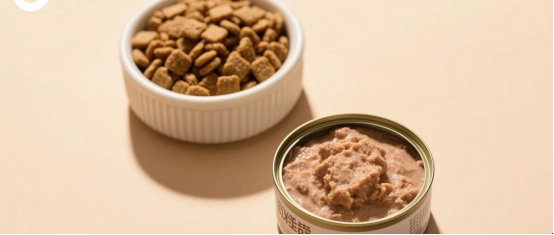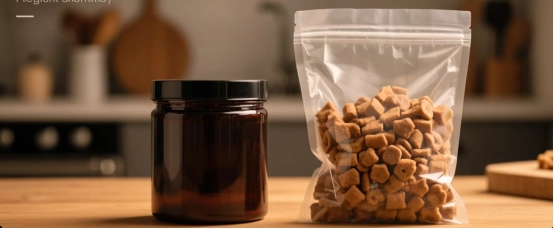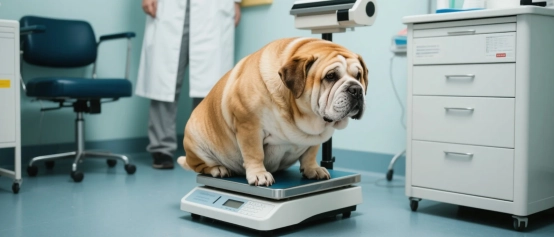
As dogs enter their senior years, their nutritional needs change significantly, making the choice of appropriate dog food critical for maintaining their health and vitality. Senior dogs often face challenges like slower metabolism, muscle loss, joint issues, or reduced digestive capacity, requiring specially formulated food to address these changes. This article explores the best dog food for senior dogs from four angles: their nutritional needs, characteristics of high-quality food, considerations when choosing, and feeding tips to guide pet owners in making informed decisions.
Senior dogs have different nutritional requirements compared to puppies or adult dogs, typically needing fewer calories to prevent weight gain while requiring high-quality protein to maintain muscle mass. With a slower metabolism and reduced activity, senior dogs are prone to obesity, so dog food should have moderate calorie density, around 350-400 kcal per cup, lower than puppy or high-activity formulas (400-500 kcal/cup). Protein content should remain at 25%-30%, prioritizing animal-based sources like chicken or fish to support muscle health and compensate for reduced protein synthesis in older dogs. Fat content should be controlled at 10%-15% to reduce obesity risk, while including Omega-3 fatty acids (like EPA and DHA from fish oil) to help alleviate arthritis or improve skin and coat health. Higher fiber content (about 4%-6%) promotes digestion, preventing constipation common in senior dogs. Added probiotics and easily digestible carbohydrates (like brown rice or sweet potatoes) support gut health, while antioxidants (such as vitamin E or blueberries) boost immunity and cognitive function.
When selecting senior dog food, focus on the ingredient list and nutritional profile. First, check that the top ingredients include specific high-quality protein sources, like "chicken" or "deboned salmon," avoiding vague "meat by-products" found in lower-quality foods. Second, premium senior dog foods often contain joint-supporting ingredients like glucosamine and chondroitin, ideal for dogs with arthritis or mobility issues. Foods with Omega-3 fatty acids and antioxidants help reduce inflammation and slow aging. An AAFCO (Association of American Feed Control Officials) statement ensures the food meets nutritional standards for adult or all-life-stage dogs. Wet food or soft dry kibble is gentler for senior dogs with dental issues, as it's easier to chew and has high moisture content (about 75%-78%), aiding hydration and reducing kidney strain. Brands like Hill's Science Diet Adult 7+ or Wellness Core Senior offer specialized senior formulas with high fiber and moderate calories, supporting weight management and digestive health.
Choosing senior dog food requires tailoring to your dog's individual needs. First, consider their size and health status. Large breeds typically enter seniority around age 6, while small breeds may do so around 8, and longer-lived breeds may need senior food later. A veterinary exam can identify specific health issues, like kidney disease, diabetes, or arthritis, which may require low-sodium, low-phosphorus, or prescription diets. For example, dogs with kidney issues need low-phosphorus food, while those with heart disease benefit from low-sodium formulas. Second, assess your dog's body condition score (BCS, 1-9 scale, 4-5 is ideal). Overweight dogs need lower-calorie food, while underweight dogs may require higher-calorie options. Additionally, senior dogs with dental issues or reduced appetite may prefer wet food or mixed feeding (dry and wet) to improve palatability and hydration. For dogs with food allergies, choose single-protein or grain-free formulas, avoiding common allergens like wheat or chicken.
Proper feeding is key to ensuring senior dog health. First, calculate daily portions using the food's feeding guidelines and your dog's weight, adjusting for activity level. For example, a 20-pound senior dog may need 1-1.5 cups of dry food daily (about 400 kcal), split into 2-3 meals to ease digestion. Weigh your dog monthly to ensure their weight stays in the ideal range. If appetite wanes, try warming wet food to enhance aroma or adding a splash of low-sodium chicken broth to boost palatability. Transition to new food gradually over 7-10 days, mixing with the old food to avoid digestive upset. Provide fresh water at all times, as senior dogs may drink less due to reduced kidney function or behavioral changes; wet food or adding water to dry kibble can increase hydration. Keep treats to under 10% of daily calories to maintain nutritional balance.
Selecting the best dog food for senior dogs involves understanding their nutritional needs, choosing high-quality food, and tailoring to individual health conditions. Premium senior dog food should feature high protein, moderate calories, joint- and digestion-supporting ingredients, and AAFCO certification. By consulting a vet, monitoring weight and body condition, and adjusting feeding practices, you can provide the right nutrition to enhance your senior dog's quality of life. The right food choice not only supports their physical health but also keeps them vibrant and happy in their golden years.





